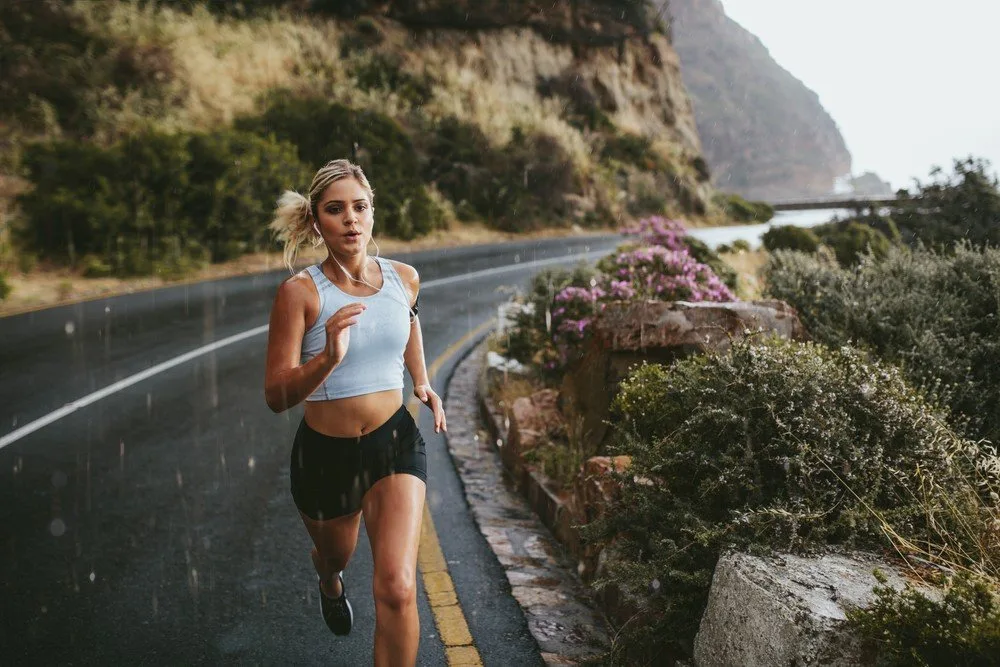Longevity paid content. New to the sport of long-distance running? It’s believed that almost a quarter of all Americans start running every year. So you’re not alone if you’re unfamiliar with the whole process of long-distance running — training tips, essential gear, and more.
If you’re looking for some assistance in getting started, look no further. The following tips will make it easy for you to start taking on longer and longer distances – so long as you take your time. Whether it’s a GPS watch, an Apple Watch medical alert, or key tips on increasing mileage, you can stay safe while getting the most out of your runs.
Essential Long Distance Running Gear
GPS device
Not only can a GPS device keep you safe while out on the trail or road, but it will also allow you to accurately track your training. This is essential for runners looking to get some finer details, too, including their mile pace, elevation gain/loss, and more.

Photo by Gabriel Alenius on Unsplash
Proper Shoes
Choosing your running shoes is no simple matter. You need a shoe that properly fits your foot, both by shape and structure. Your best bet is to go to a run specialty store, which will personally fit you for your running shoes, checking things such as your gait and foot shape while standing, as well as your knee and foot flexion while running.
Non-cotton Clothing, Socks and Underwear
Merino wool is all the rage nowadays among runners, and for good reason. Cotton, while comfortable in your daily life, is not very good for running as it retains sweat.
That’s bad news in the long run, as it will lead to your shirt becoming heavy. Not only that, you’ll end up with some serious chafing all over your body. Merino wool, on the other hand, protects your skin by wicking moisture away from the body and keeping skin cool.
Personal Identification
It’s important you carry personal identification on a run in the event of an emergency. Instances could include dehydration, heat exhaustion, a diabetic attack, a snake bite, or being hit by a car. While you don’t want to think about any of these events happening, it’s important you remain safe in case of any of them. A piece of jewelry as simple as a medical alert bracelet can be enough to help you stay protected.
Hats and Headbands
A long time spent in direct sunlight can be bad for your scalp and facial health. We recommend wearing a hat or headband, not only to collect sweat but to protect your head against UV rays.
Hydration
You’re going to need to stay hydrated to get the most out of your run. It’s important you have handheld water bottles or a hydration vest that allows you to carry water while out on your runs. Hydration is imperative to strong performance and training, after all.

Photo by Subtle Cinematics on Unsplash
Sunglasses
A sunny day can be rough on the eyes. While you may think of them as a fashion accessory, they can really keep you comfortable on long runs, helping you avoid eye strain while running.
Stretching and Recovery Devices
It’s important you also have devices to recover following your runs. Tools can include calf stretches, foam rollers, rolling sticks, knee compression sleeves, plantar fasciitis rollers, and more. Used following a run, they can help loosen muscles and tendons, pushing them to properly recover before your next run.
How To Train Effectively As A Long Distance Runner

Photo by Tikkho Maciel on Unsplash
Create A Routine
You need to follow a routine to be successful. Determine when you’ll be running during the week: what days you’ll run, what days you’ll recover, and what day you’ll do your extra-long run.
Increase Gradually
If you were working on your bench press, you wouldn’t suddenly jump from 150 pounds to 200 pounds. You’d be asking to get injured. The same goes for running. You wouldn’t increase your mileage from 35 miles to 50 miles in one week.
The general rule of thumb is to never increase your mileage or mile-pace by more than 10 percent in a week’s time. Also, you should never increase both in the same week. Choose one or the other. For instance, at a maximum, you could increase your mileage from 40 miles to 44 miles, all while maintaining the same pace.
Don’t Overdo It
Once you get into long-distance running, it’s hard to not want to do it every day, as hard as you can. But don’t allow yourself to go overboard. You shouldn’t run too hard too often, nor go on extra-long runs every single day. Doing so can lead to burnout, injuries like stress fractures, and more.

Photo by RUN 4 FFWPU from Pexels
Remember to Hydrate
Dehydration can happen quickly when running, especially if you’re the type who sweats the second you break into a jog. That’s why you need to carry and drink water while out on runs. Don’t ever be without water, particularly on hot days, where conditions like heat exhaustion and stroke are more common.
Please Eat
Even if you’re trying to lose weight, you need to eat following your runs. We tend to burn anywhere between 100 and 110 calories per mile while running. That means a 15-mile run can burn up to 1,500 calories. You need to eat enough to ensure that your body can properly heal following your run. So don’t skimp out – just ensure you keep eating in moderation, relative to your exercise regimen.
Strength Train
You shouldn’t leave running as your only exercise. While incredible for your overall health, running requires the use of specific muscle groups. You need to incorporate a lifting routine for runners to get the most out of their workouts. This is important as it will help you condition muscles you regularly use, while also maintaining other muscles.
Looking for more in-depth tips on how to succeed at long-distance running, whether for personal gains or the competitive edge? Don’t hesitate to grab a trusted book like Daniels’ Running Formula, which has been long trusted by many coaches and elite runners.




![women [longevity live]](https://longevitylive.com/wp-content/uploads/2020/01/photo-of-women-walking-down-the-street-1116984-100x100.jpg)










